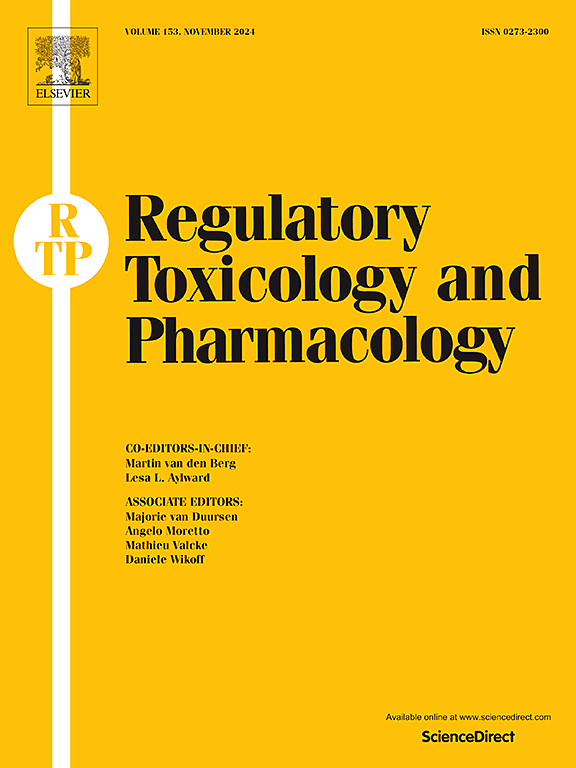外周限制卡巴阿片受体激动剂 HSK21542 滥用潜力的临床前评估。
IF 3
4区 医学
Q1 MEDICINE, LEGAL
引用次数: 0
摘要
HSK21542 是一种外周限制性卡巴阿片受体 (KOR) 激动剂,开发用于疼痛治疗。由于阿片受体激活会引起中枢神经系统药理学方面的问题,如身体依赖性和成瘾可能性,因此在批准上市前需要对 HSK21542 的滥用可能性进行评估。HSK21542 的临床前滥用潜力评估包括以下研究:1)静脉自我给药研究,探讨大鼠自我给药瑞芬太尼的相对强化效力;2)大鼠药物辨别研究,探讨 HSK21542 在大鼠辨别戊唑醇时的药理相似性;3)大鼠条件性位置偏好(CPP)范式,以测试奖励效应;4)大鼠自然身体依赖-自发戒断研究,对长期接受 HSK21542 治疗的大鼠进行研究;5)纳洛酮沉淀戒断试验,在长期接触 HSK21542 后评估其身体依赖潜力。结果表明,HSK21542 没有正强化效应的行为学证据,也没有与戊佐辛相似的鉴别刺激效应。HSK21542 也不会在大鼠体内产生 CPP。此外,HSK21542 在大鼠体内长期治疗也不会产生自发戒断或纳洛酮诱发的戒断。总之,这些临床前研究结果表明,HSK21542 在动物体内没有滥用潜力,这也证明其在人体中的滥用潜力较低。本文章由计算机程序翻译,如有差异,请以英文原文为准。
Preclinical evaluation of abuse potential of the peripherally-restricted kappa opioid receptor agonist HSK21542
HSK21542 is a peripherally-restricted kappa opioid receptor (KOR) agonist developed for pain treatment. Because of the CNS pharmacological concern of opioid receptor activation, such as physical dependence and addiction potential, an assessment of abuse potential of HSK21542 was required prior to marketing approval. The preclinical abuse potential assessments for HSK21542 included the following studies: 1) intravenous self-administration study to explore the relative reinforcing efficacy in rats self-administering remifentanil; 2) rat drug discrimination study to examine the pharmacological similarity of the interoceptive or subjective effects of HSK21542 in rats discriminating pentazocine; 3) rat conditioned place preference (CPP) paradigm to test the rewarding effects; 4) rat natural physical dependence-spontaneous withdrawal study in rats chronically treated with HSK21542; 5) naloxone-precipitated withdrawal assay following chronic HSK21542 exposure to evaluate its physical dependence potential. The results showed that HSK21542 was devoid of behavioral evidence of positive reinforcing effect and did not share similar discriminative stimulus effects with pentazocine. HSK21542 also did not produce CPP in rats. In addition, HSK21542 did not produce spontaneous withdrawal or naloxone-precipitated withdrawal in rats with chronic treatments. Collectively, these preclinical findings suggest that HSK21542 has no abuse potential in animals, which demonstrate low abuse potential in humans.
求助全文
通过发布文献求助,成功后即可免费获取论文全文。
去求助
来源期刊
CiteScore
6.70
自引率
8.80%
发文量
147
审稿时长
58 days
期刊介绍:
Regulatory Toxicology and Pharmacology publishes peer reviewed articles that involve the generation, evaluation, and interpretation of experimental animal and human data that are of direct importance and relevance for regulatory authorities with respect to toxicological and pharmacological regulations in society. All peer-reviewed articles that are published should be devoted to improve the protection of human health and environment. Reviews and discussions are welcomed that address legal and/or regulatory decisions with respect to risk assessment and management of toxicological and pharmacological compounds on a scientific basis. It addresses an international readership of scientists, risk assessors and managers, and other professionals active in the field of human and environmental health.
Types of peer-reviewed articles published:
-Original research articles of relevance for regulatory aspects covering aspects including, but not limited to:
1.Factors influencing human sensitivity
2.Exposure science related to risk assessment
3.Alternative toxicological test methods
4.Frameworks for evaluation and integration of data in regulatory evaluations
5.Harmonization across regulatory agencies
6.Read-across methods and evaluations
-Contemporary Reviews on policy related Research issues
-Letters to the Editor
-Guest Editorials (by Invitation)

 求助内容:
求助内容: 应助结果提醒方式:
应助结果提醒方式:


